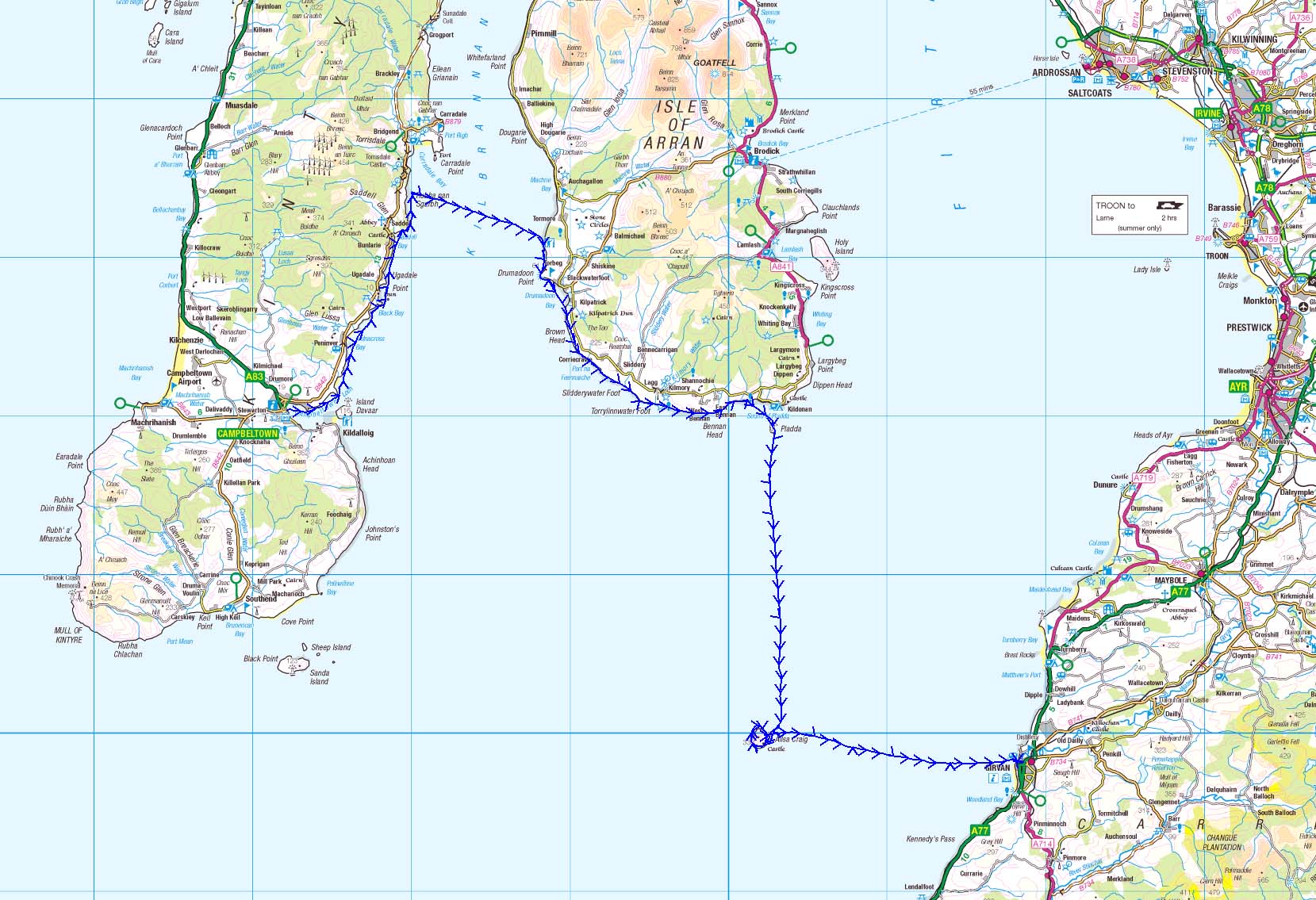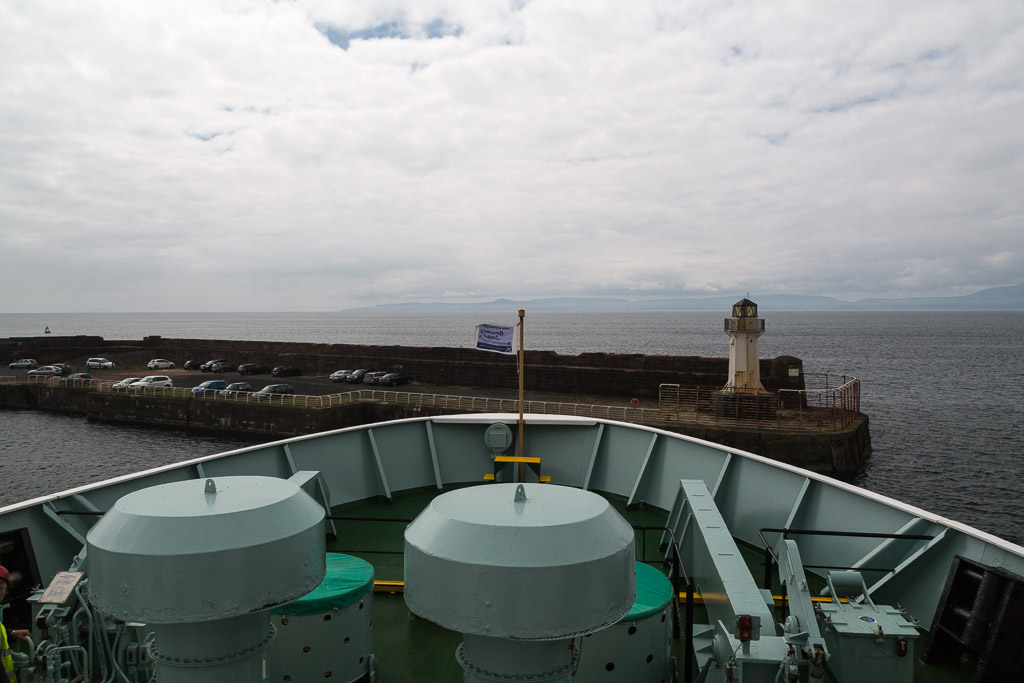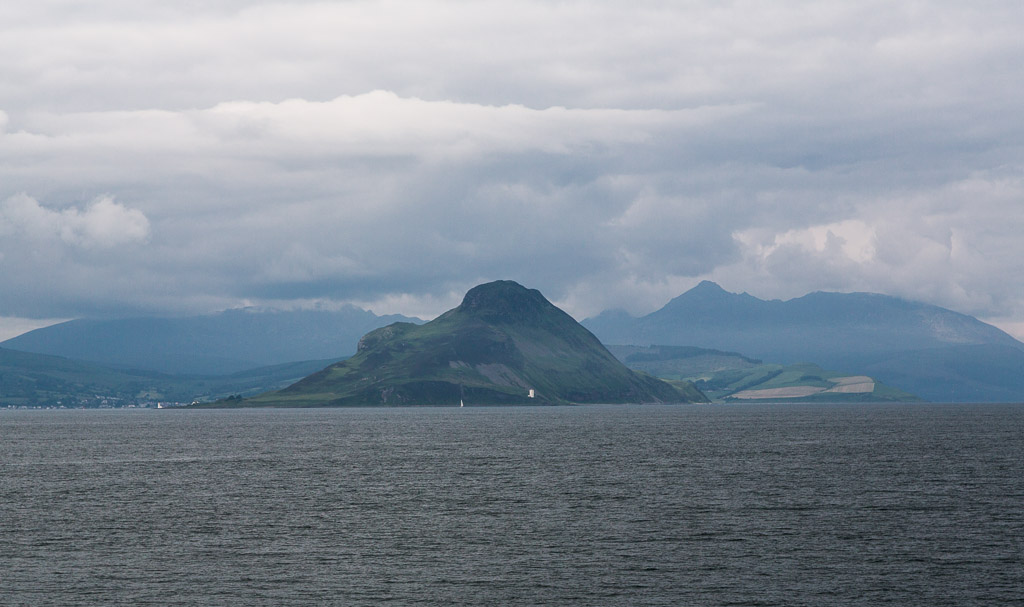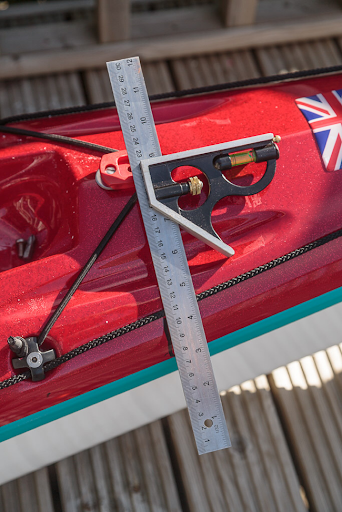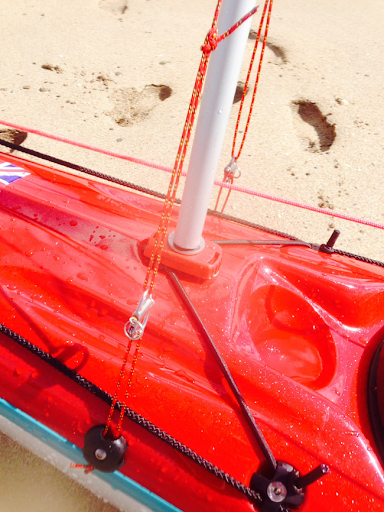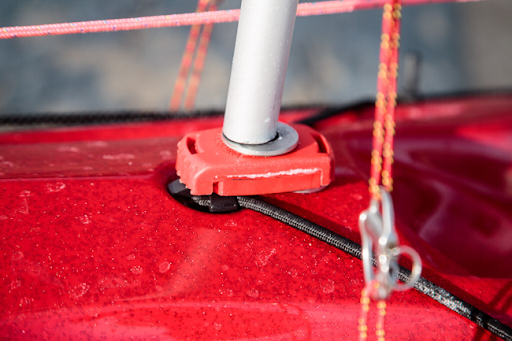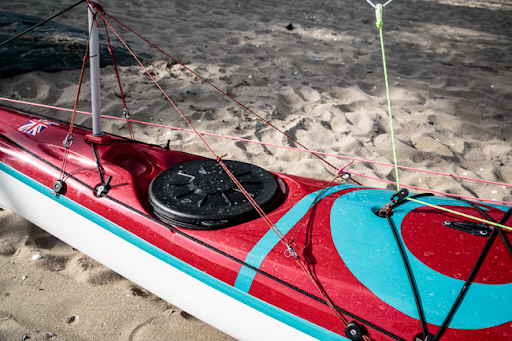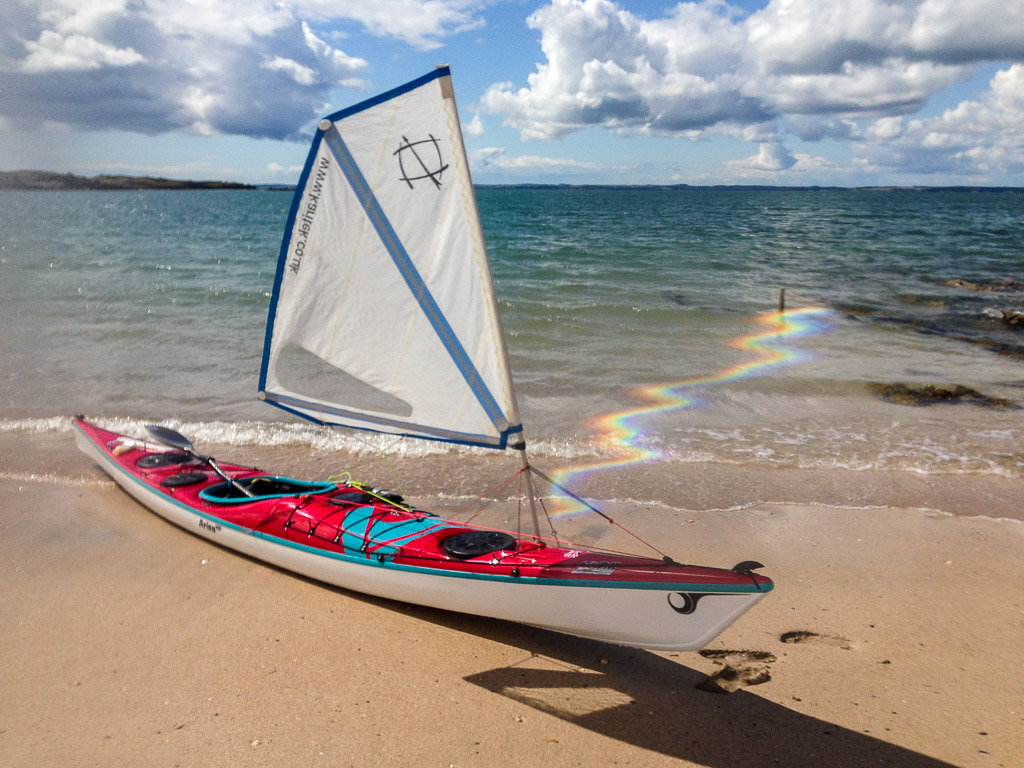This striking pillar box red metallic with turquoise trim
P&H Aries 155 is the latest addition to the seakayakphoto quiver.
Not only has it a
Flat Earth kayak sail, it has an other interesting addition.. Note the central cord and cleat...
...which operates a large carbon fibre...
...forward fin for upwind paddle sailing.The fin is 30cm long and measures 11cm fore and aft at its mid length point. The fin is stiff but is cut from a flat plate of carbon fibre composite. It is pulled down by elastic and raised by the cord on deck. It will autoretract if you hit an obstruction. The fin box slot is 49cm long and will obviously increase turbulence.
The fin box is grp and is moulded into the forward bulkhead so it is very stiff. It does add to the weight of the kayak.
Here is the proof of the pudding. It is slack water at high tide. Wind is WNW F4 to F5. The sea is relatively flat due to being downwind of the shelter of Ringdoo Point and Garvellan rocks. I was paddle sailing upwind from Carrick Point to Ringdoo Point. I paddled four 500m tacks. The first two tacks were with both the forward fin up and the skeg up. From
experiments with the Aries 155 last year, I already knew that it would point to about about 60 degrees from the wind with a tacking angle of about 60 degrees without the forward fin and this is exactly what I found on this occasion.
I then put the forward fin fully down for the third and fourth tacks. From experiments with the
bigger Cetus HV fitted with a smaller Karitek forward fin last year, I expected to paddle sail up wind with just the forward fin down and the skeg up. However, the balance point is different and as soon as I put the large forward fin down the kayak luffed up into the wind but this was easily corrected by putting the skeg fully down. I now found I was paddling 45 degrees to the wind with a 90 degrees tacking angle. This is the same as a Laser dinghy which was tacking alongside. Despite pointing 15 degrees higher into the wind my forward speed remained the same at a steady 7.8 km/hr. I also found it was easier to balance against the F4-5 wind with less strain on my core muscles.
Pros and cons:
The P&H forward fin is highly effective in improving a short kayak's upwind performance. It is very easy to deploy and retract and when fully down the sailing angle can be easily controlled by varying how much skeg is deployed at the stern. I found it easier to balance and control the sail upwind when using the forward fin. On the down side it adds cost, weight, water resistance and another control line. You do not need a forward fin to have a lot of fun downwind paddle sailing the Aries 155. Lastly I found longer kayaks such as the Cetus MV will already paddle sail upwind at 45 degrees to the wind without a forward fin, though these kayaks are less fun down wind than the Aries 155.If you want to add a forward fin to an existing kayak then
Kari-tek will be able to supply/fit a slightly smaller one which I found worked very well last year.
In conclusion, I found the P&H Aries 155 with forward fin to be the most versatile and fun sea kayak for paddle sailing which I have yet tried. Upwind performance over the standard kayak is markedly improved. Lastly the pillar box red metallic looks fantastic in the sunshine!















 ...at
...at  Saddell House is now in the care of the
Saddell House is now in the care of the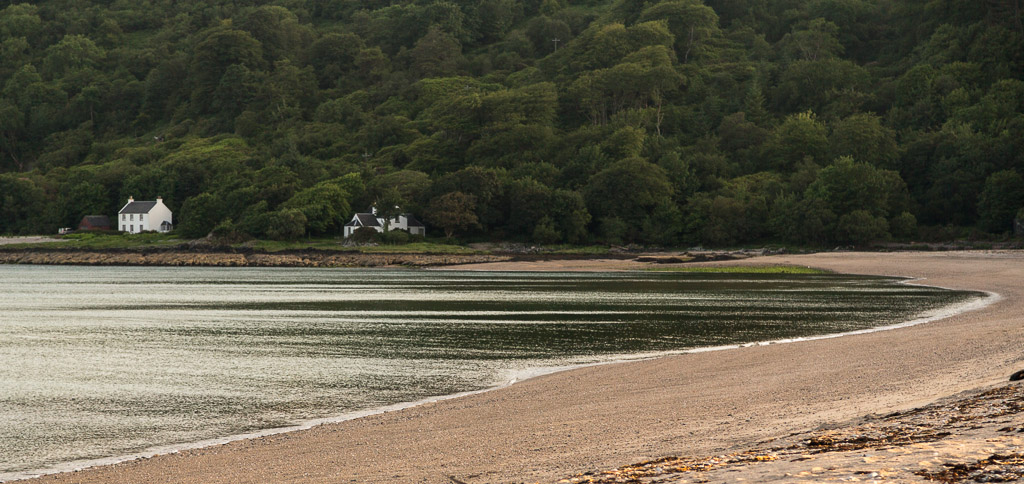 After a long hard paddle it was a relief to get out of the saddle onto the sands of Saddell Bay.
After a long hard paddle it was a relief to get out of the saddle onto the sands of Saddell Bay. It was a delight to pitch our tents on sweet smelling machair, laced with clover.
It was a delight to pitch our tents on sweet smelling machair, laced with clover. We even managed to enjoy our dinner and Guinness before the sun set. Our Kintyre, Arran, Ailsa Craig, Ayrshire trip was well underway.
We even managed to enjoy our dinner and Guinness before the sun set. Our Kintyre, Arran, Ailsa Craig, Ayrshire trip was well underway.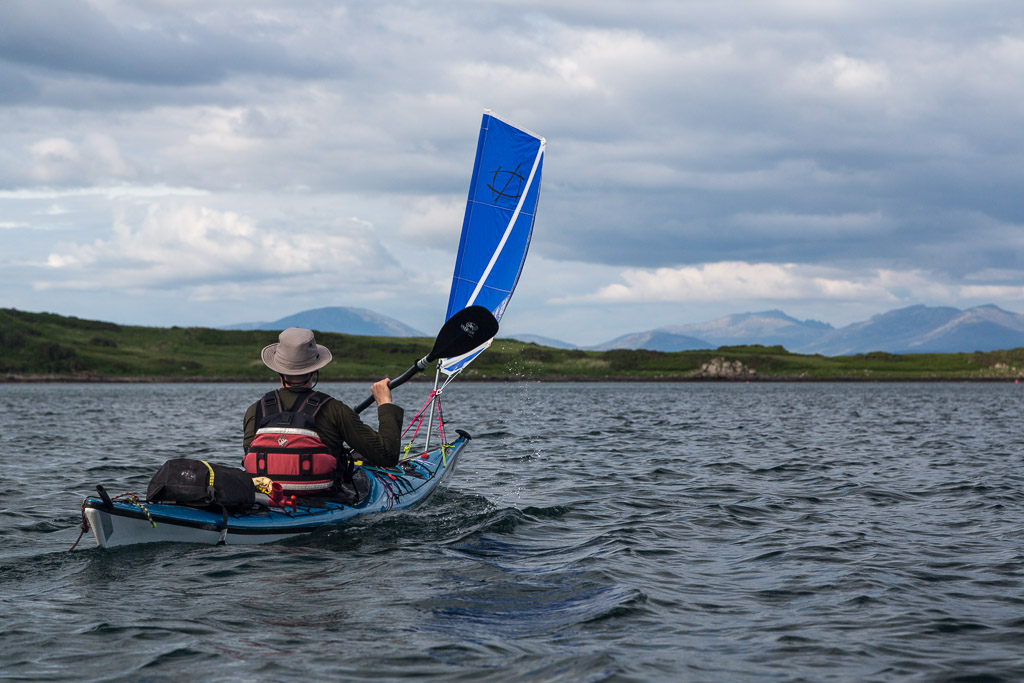
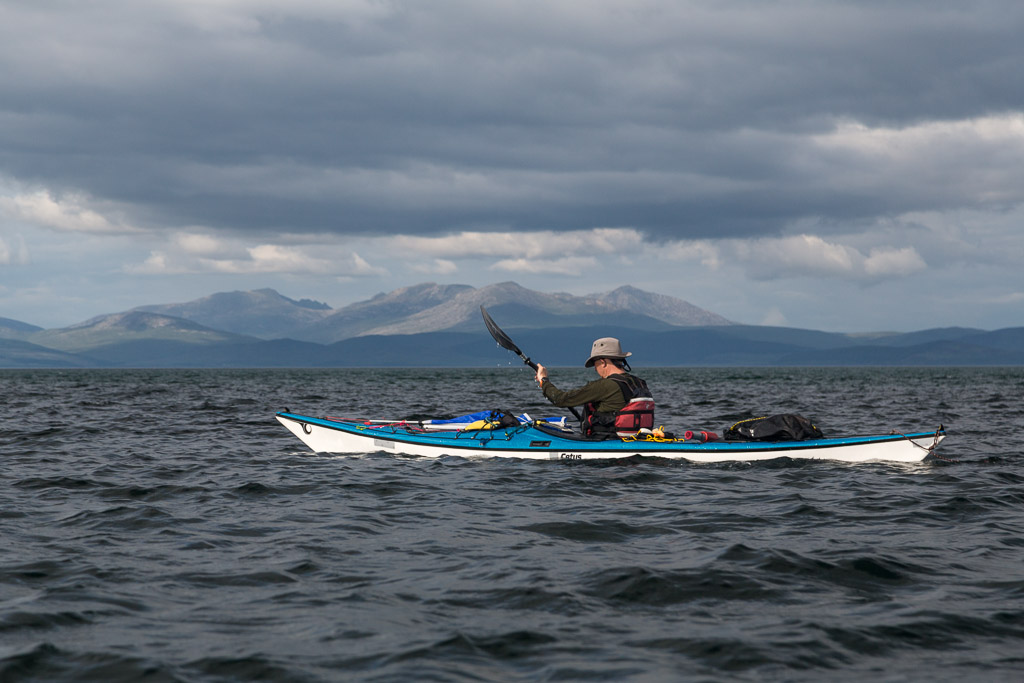 ...it soon came round to hit us right on the nose and we had to drop sails and get our heads down for...
...it soon came round to hit us right on the nose and we had to drop sails and get our heads down for... ...a stiff paddle into the wind.
...a stiff paddle into the wind.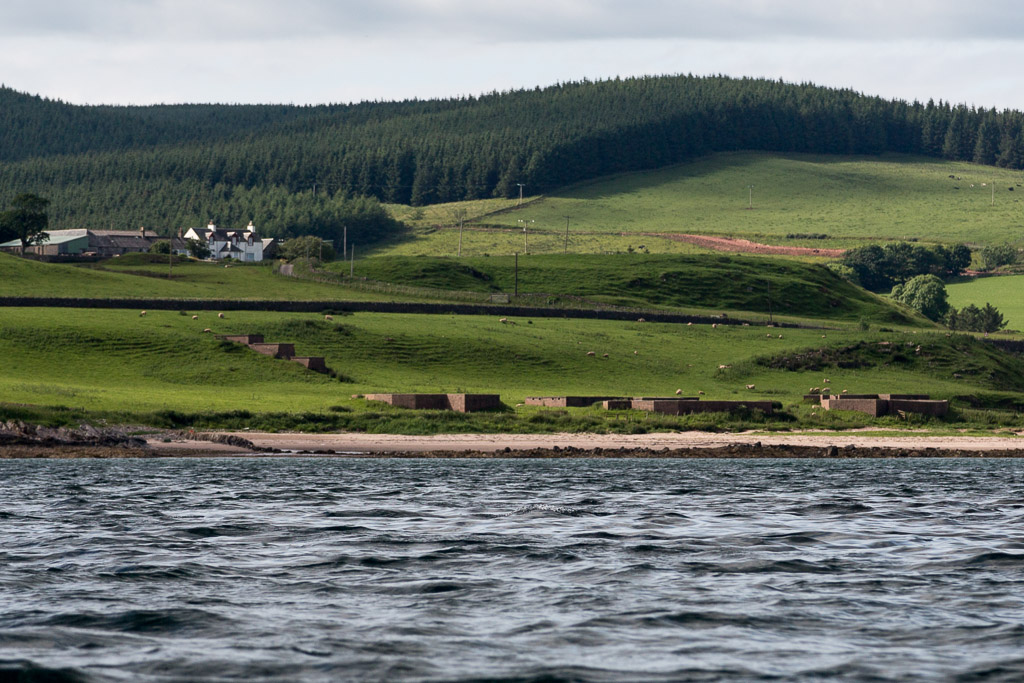 At
At  It was a relief to catch our breath on a cobbled shore at Black Bay but rather worryingly, our goal, Ailsa Craig, was becoming more and more distant and was now little more than a slight blip on the horizon.
It was a relief to catch our breath on a cobbled shore at Black Bay but rather worryingly, our goal, Ailsa Craig, was becoming more and more distant and was now little more than a slight blip on the horizon. We gained a little shelter as we approached
We gained a little shelter as we approached Rounding the point we found ourselves back in the teeth of the wind. There was still no break in the dark rocks but fortunately we spotted the inviting sweep of the sands at Saddell Bay which was still 5 km away beyond Ugadale Point. It was getting late so there was nothing for it but to get our heads down again and make what progress we could against the wind.
Rounding the point we found ourselves back in the teeth of the wind. There was still no break in the dark rocks but fortunately we spotted the inviting sweep of the sands at Saddell Bay which was still 5 km away beyond Ugadale Point. It was getting late so there was nothing for it but to get our heads down again and make what progress we could against the wind.
 Tony and I made our way down to the car deck to get ready to embark at 16:30.
Tony and I made our way down to the car deck to get ready to embark at 16:30.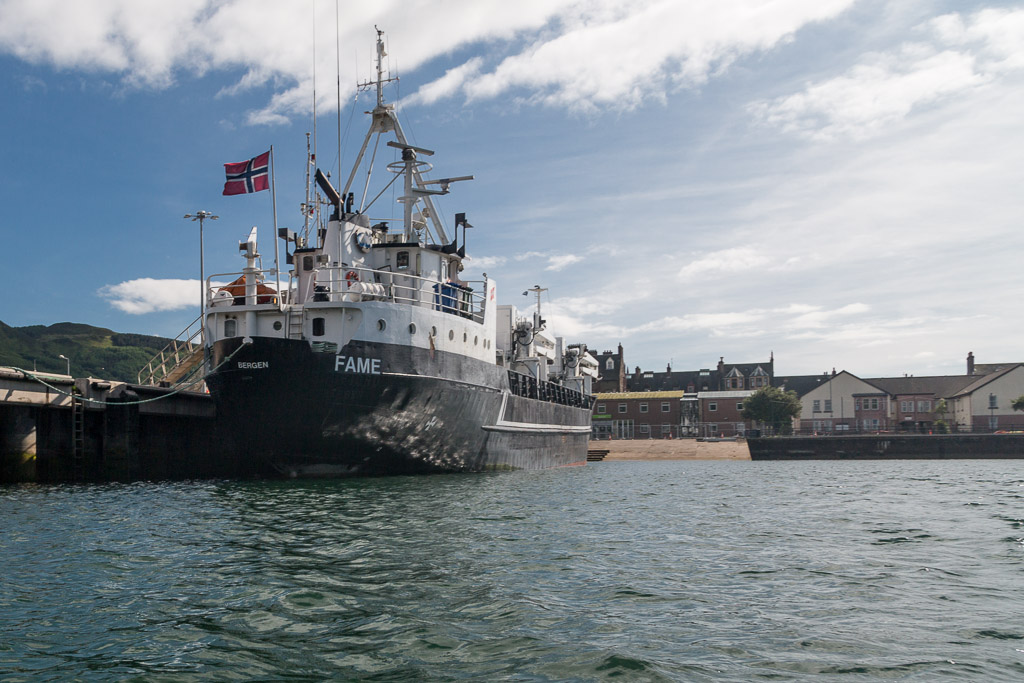 We launched from this slipway just to the north of the ferry terminal. Amazingly we were on the water by 16:56. This was to be a flying visit to Campbeltown as we hoped to get well up the east coast of Kintyre before nightfall. Leaving the slipway we passed MV Fame from Bergen. She is a general cargo ship and is often seen round the Clyde.
We launched from this slipway just to the north of the ferry terminal. Amazingly we were on the water by 16:56. This was to be a flying visit to Campbeltown as we hoped to get well up the east coast of Kintyre before nightfall. Leaving the slipway we passed MV Fame from Bergen. She is a general cargo ship and is often seen round the Clyde. Although Campbeltown is a pretty quiet place these days at various times it has had a huge fishing fleet, a coalmine, a canal which was superseded by a railway, 30 odd whisky distilleries, a huge military airbase and extensive farms in the surrounding countryside.
Although Campbeltown is a pretty quiet place these days at various times it has had a huge fishing fleet, a coalmine, a canal which was superseded by a railway, 30 odd whisky distilleries, a huge military airbase and extensive farms in the surrounding countryside.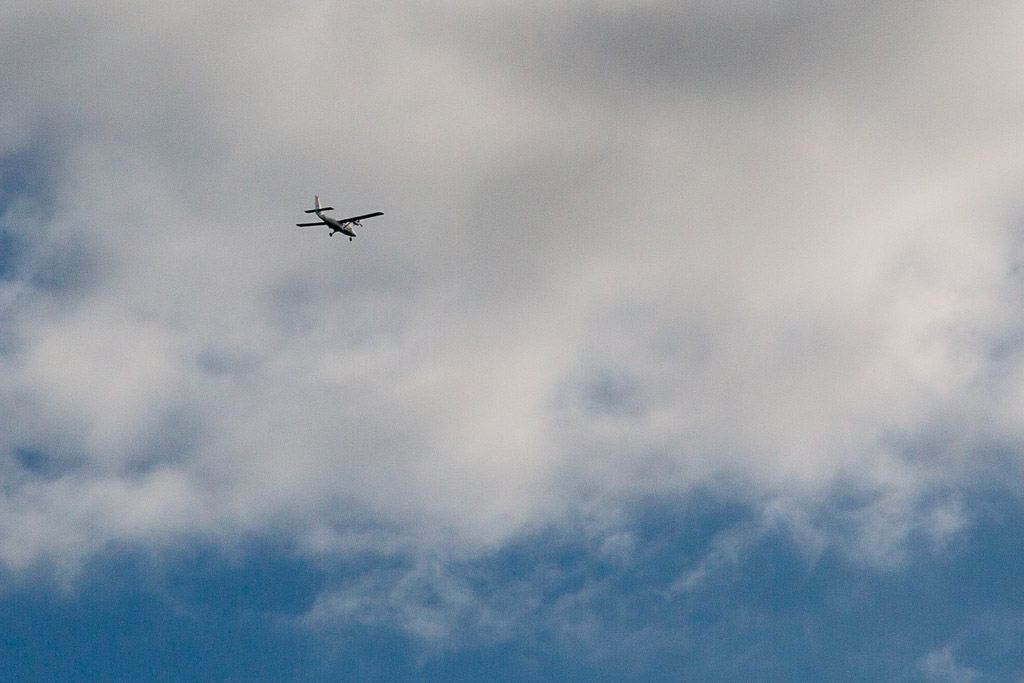 It was not just the ferry that was bringing visitors to Cambeltown. This was the 18:05 FlyBE flight coming in from Glasgow.
It was not just the ferry that was bringing visitors to Cambeltown. This was the 18:05 FlyBE flight coming in from Glasgow. The MV Isle of Arran soon swept out of Cambeltown Loch...
The MV Isle of Arran soon swept out of Cambeltown Loch...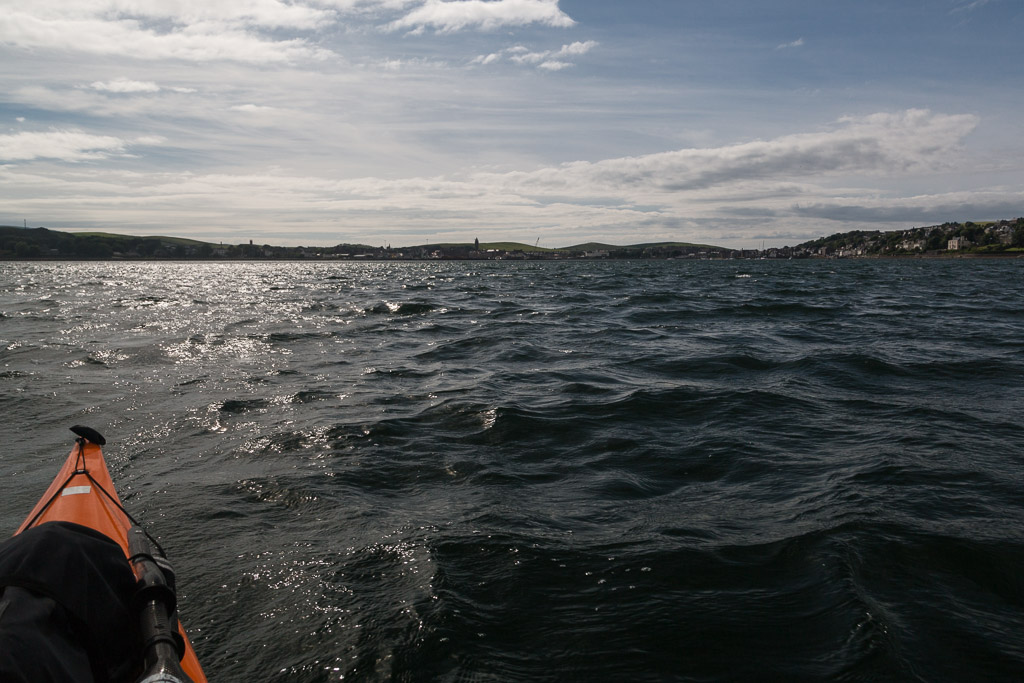 ...and we followed in her wake, leaving Campbeltown quickly behind. A nice little tail wind got up so we wasted no time in...
...and we followed in her wake, leaving Campbeltown quickly behind. A nice little tail wind got up so we wasted no time in... ...launching our Flat Earth kayak sails.
...launching our Flat Earth kayak sails.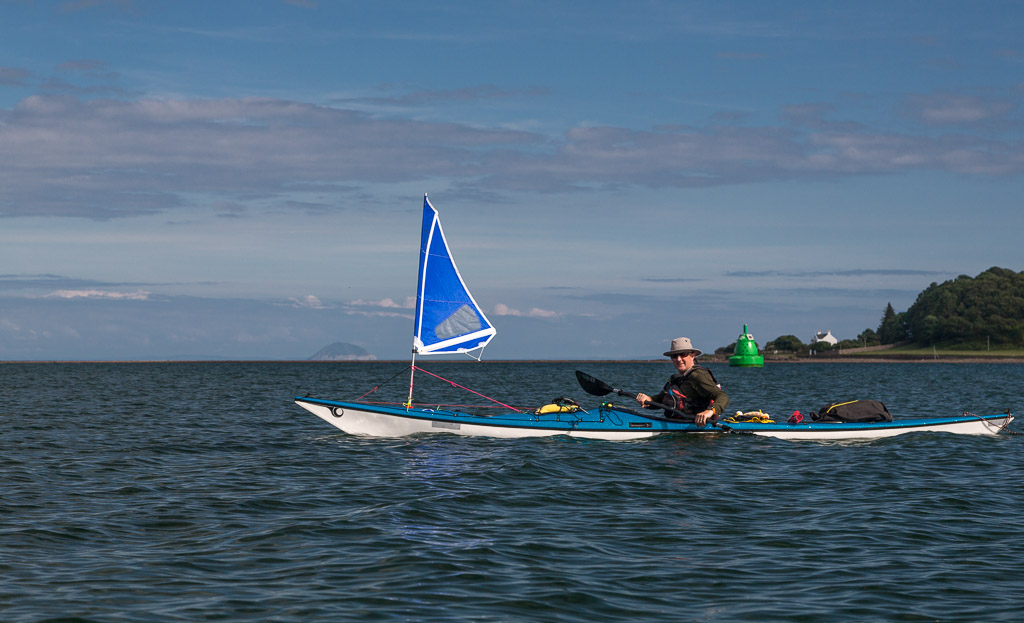 In no time we were at the mouth of the loch and caught sight of a distant Ailsa Craig on which we hoped to camp in three nights time but...
In no time we were at the mouth of the loch and caught sight of a distant Ailsa Craig on which we hoped to camp in three nights time but... ...for now we turned our bows north to paddle sail up the east coast of Kintyre towards the Kilbrannan Sound and the soaring granite peaks of Arran beyond. Our adventure had started...
...for now we turned our bows north to paddle sail up the east coast of Kintyre towards the Kilbrannan Sound and the soaring granite peaks of Arran beyond. Our adventure had started...